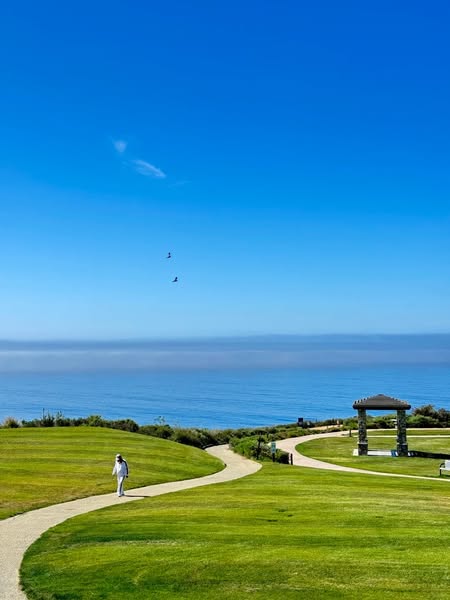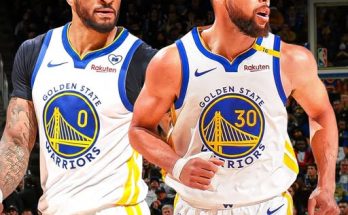Los Angeles is many things to many people. It’s a sprawling canvas of ambition and contradiction—coastal breezes tangled in urban rush, canyons brushing shoulders with concrete, sun-drenched luxury pressed against the pulse of tireless hustle. And in all of that contrast, nestled quietly among hills, homes, and humming highways, exists a golf course so stunning, it has left an indelible mark on my memory. I’ve played dozens of courses across California, from Pebble Beach to Torrey Pines, but there is one course in Los Angeles that stands above the rest—not because it’s the most famous or the most exclusive, but because it embodies beauty in its purest, most natural form. That course is the rustic yet refined marvel known as Rustic Canyon Golf Course in Moorpark, just far enough from central LA to feel like an escape, but still close enough to be part of the city’s greater rhythm.
From the moment I arrived, there was something different about the place. Maybe it was the silence—the good kind. The kind of quiet that hangs in the air before a great performance or a life-changing moment. The parking lot wasn’t packed with luxury cars, and there were no pretensions. It was early, the sun was still stretching awake behind the Santa Susana Mountains, and the long shadows made everything look poetic. A thin mist hovered just above the fairways, and the dew clung to the edges of the native grasses lining the tee boxes. Rustic Canyon doesn’t hit you with flashy aesthetics. It isn’t manicured to perfection like Riviera or Sherwood. But that’s its charm—it’s beautiful because it’s natural. It feels like it belongs to the land, not imposed upon it.
The course was designed by Gil Hanse, a name that evokes reverence among golf architecture fans. Hanse, who also worked on the Olympic Golf Course in Rio and Streamsong Black in Florida, has a signature style—minimalist, rooted in the terrain, and deeply respectful of the game’s Scottish origins. Rustic Canyon reflects all of that. It feels ancient and organic, like it was discovered more than it was built. No bulldozers carving out fake contours, no artificial waterfalls or forced water hazards. The layout flows with the topography in a way that feels like a conversation between the land and the game.
I remember the first tee shot vividly. A gentle downhill par four, nothing overly intimidating, but framed with that rugged, raw aesthetic that would define the round. I hit a smooth 3-wood, the ball tracking left to right, bouncing and running along the firm, fescue fairway. There’s something special about watching a well-struck shot behave the way it was meant to, bouncing and rolling instead of plugging into overwatered turf. The ground game is not just viable here—it’s essential. That’s part of what makes the course so unforgettable. Every shot feels like it has options. You can go high, sure, but you can also stay low, use the slopes, let the contours dictate your decisions. It forces you to think, to strategize, to really play golf instead of just swinging clubs.
As the round progressed, the course revealed more of its charm. The par threes are some of the most scenic I’ve played, particularly the 11th, which plays slightly downhill to a green perched like a small island in a sea of natural vegetation. The bunkering throughout the course is strategic and visually striking—not the deep, penal traps of traditional parkland courses, but sprawling sandy areas that blend into the native surroundings. They’re as much aesthetic elements as they are functional ones. You stand on each tee box and feel like you’re looking at a painting, a scene composed by someone who understands both golf and nature intimately.
By the time I reached the back nine, the morning haze had burned off, revealing a crystal blue sky and golden light that danced off the straw-colored grasses surrounding each hole. I took a moment at the 13th tee to just look around. There was no sound but the soft rustle of wind and the occasional call of a red-tailed hawk circling above. No traffic, no sirens, no phones ringing. Just earth, sky, and golf. I think that’s when it really hit me—this wasn’t just a beautiful golf course; it was a beautiful place. One of those rare spots where everything aligns: the setting, the sport, the solitude.
One of the aspects that makes Rustic Canyon stand out so dramatically in Los Angeles is its authenticity. In a city that can often feel curated and constructed, this course is unapologetically itself. It doesn’t try to be Augusta or Pine Valley. It leans into its wildness, its imperfections, its native roots. There’s no forced landscaping or unnatural water features. Instead, you get dry creek beds that swell with winter rains, native scrub oak, and the occasional coyote trotting across the fairway. It’s golf stripped down to its essentials—strategy, creativity, and connection to the land.
Walking the course rather than riding a cart only deepened the experience. The routing is gentle enough for walking, but more importantly, it allows you to absorb the surroundings. You feel the crunch of gravel beneath your feet, hear your own breath as you climb gentle rises, and see the subtle changes in the terrain that you’d miss from a cart path. That physical connection to the course—to the ground itself—made each shot feel more intimate, more consequential.
As I stood on the 18th tee, looking back at where I had come from, I felt a genuine sense of gratitude. The round hadn’t been perfect—I missed some putts, made a few mental errors, and found more than one bunker—but that didn’t matter. What stayed with me wasn’t the scorecard, but the experience. The sun setting behind the hills, casting long shadows over the final fairway. The sound of a well-struck iron shot echoing in the quiet. The way the light turned the fescue golden in the final hour of the day. The simplicity of the course made room for something profound—a reminder that golf, at its core, is about the relationship between the player, the ball, and the land. Everything else is noise.
Later, sitting outside the modest clubhouse with a cold drink in hand, I watched other golfers coming off the course, their faces showing the same quiet awe I felt. Some smiled. Others just stood for a moment, taking it in. That’s the effect of a truly beautiful course—it doesn’t just impress you, it changes you. It shifts your idea of what golf can be. It shows you that beauty isn’t always about opulence or grandeur. Sometimes it’s about restraint. Sometimes it’s about letting the land speak for itself.
Rustic Canyon may not have the prestige of some of LA’s private clubs. It doesn’t host PGA tournaments or appear regularly on top-100 lists. But to me, it represents everything that is right with the game of golf. It’s accessible, honest, and profoundly beautiful—not in the Instagram-filtered sense, but in the kind that lingers long after you’ve left. Every time I return to Los Angeles, I make time for another round there. And every time, it feels like coming home.
In a city that thrives on image, Rustic Canyon is the rare place that’s entirely substance. It doesn’t shout. It whispers. And if you’re lucky enough to play it, to walk its fairways and take in its natural splendor, you’ll understand exactly what I mean. It’s the most beautiful golf course I’ve ever played in Los Angeles—not just because of how it looks, but because of how it feels. And that’s a kind of beauty that no photograph or scorecard could ever fully capture.



